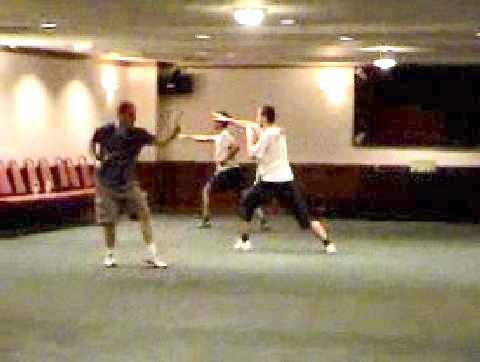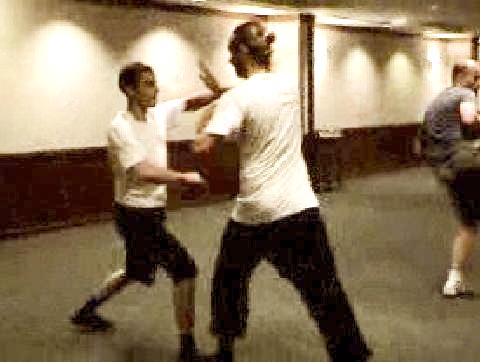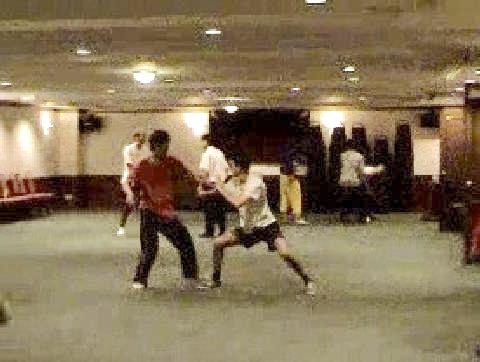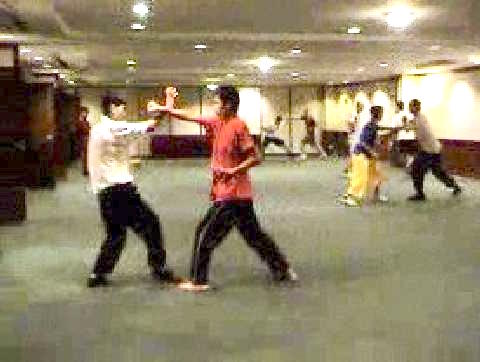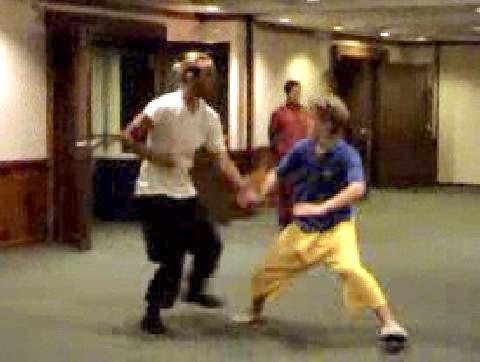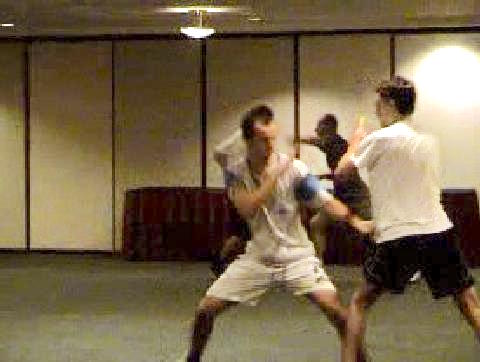FROM COMBAT SEQUENCES TO FREE SPARRING
 Applying Shaolin Kungfu spontaneously in free sparring
Applying Shaolin Kungfu spontaneously in free sparring
Students may be able to use kungfu patterns in pre-arranged combat sequence training, but can they still use kungfu patterns effectively and spontaneously in free sparring? Yes, they can if they are systematically trained.
The video series here show course participants of the Intensive Shaolin Kungfu Course of October 2006 progress from using kungfu patterns in combat sequences to using kungfu patterns in free sparring. The combat sequences used here are Sequences 13 to 16, which deal with felling and gripping techniques.
First, there is full control. The control is gradually and systematically released until eventually they are sparring freely. This is achieved through various steps in our sparring methodology, like continuation, external change and internal change, and through the progress of addition and subtraction.
From Combat Sequences of Shaolin Kungfu to Free Sparring from Wong Kiew Kit on Vimeo.
1. Stances: the Foundation for Internal Force and Combat Efficiency
2. Footwork Secrets for Health, Efficiency and Elegance
3. Moving into a Same Direction using Different Ways to Gain Advantages
4. Picture-Perfect Forms and Flowing Movements
5. From Random Fighting to Patterns, and from Patterns to Sequences and Sets
6. One-Step Sparring to Develop Combat Skills
7. From Pre-Arranged Sparring to Guided Sparring
8. Using Techniques and Tactics in Sparring
9. The Five Basic Kicks
10. The Secrets of Side Kicks and Continuous Cannons
11. How You may Defeat Opponents Experienced in Random Free Sparring
12. How Would a Fragile Girl Counter a Powerful Sweeping Kick from a Muay Thai Fighter?
13. Shaolin Felling Techniques and their Defences
14. Safety First Before Executing Felling Techniques
15. From Combat Sequences to Free Sparring
16. Sixteen Combat Sequences and Five Kungfu Sets
17. Surprise your Attacker with a Counter-Attack
18. Working out Ways to Fight a Boxer
19. Effective Tactics and Techniques against Boxers
20. From Gross Outline to Fine Details
21. Exploiting Advantage to Clinch Victory
22. Variety of Kungfu Techniques against Boxers
23. Analysis of Techniques Used against Boxers
24. Using Shaolin Kunfu against Boxing in Free Sparring
25. Effective Shaolin Tactics and Techniques against Kick-Boxing
26. Shaolin Kungfu against Kick-Boxing in Free Sparring
27. How to Handle a Karate Exponent
28. How to Handle a Taekwondo Exponent
29. How to Handle a Wrestling Exponent
30. Understanding the Typical Attacks of Muay Thai Fighters
31. Grandmaster Ho's Secrets in Countering Muay Thai Fighters
32. First Avoid Defeat, Then Secure Victory
33. Counteroing the Elbow and Knee Attacks of Muay Thai Fighters


